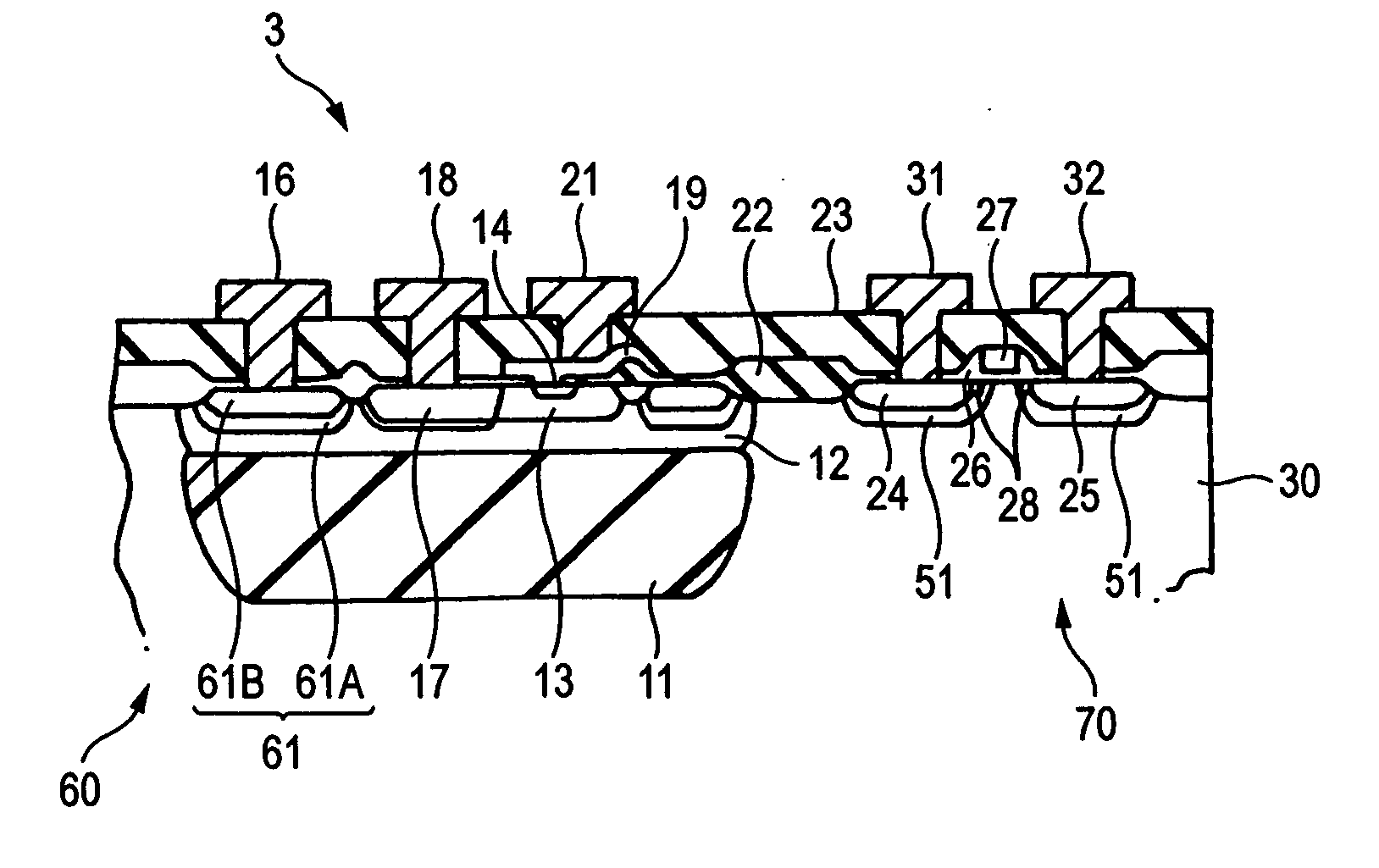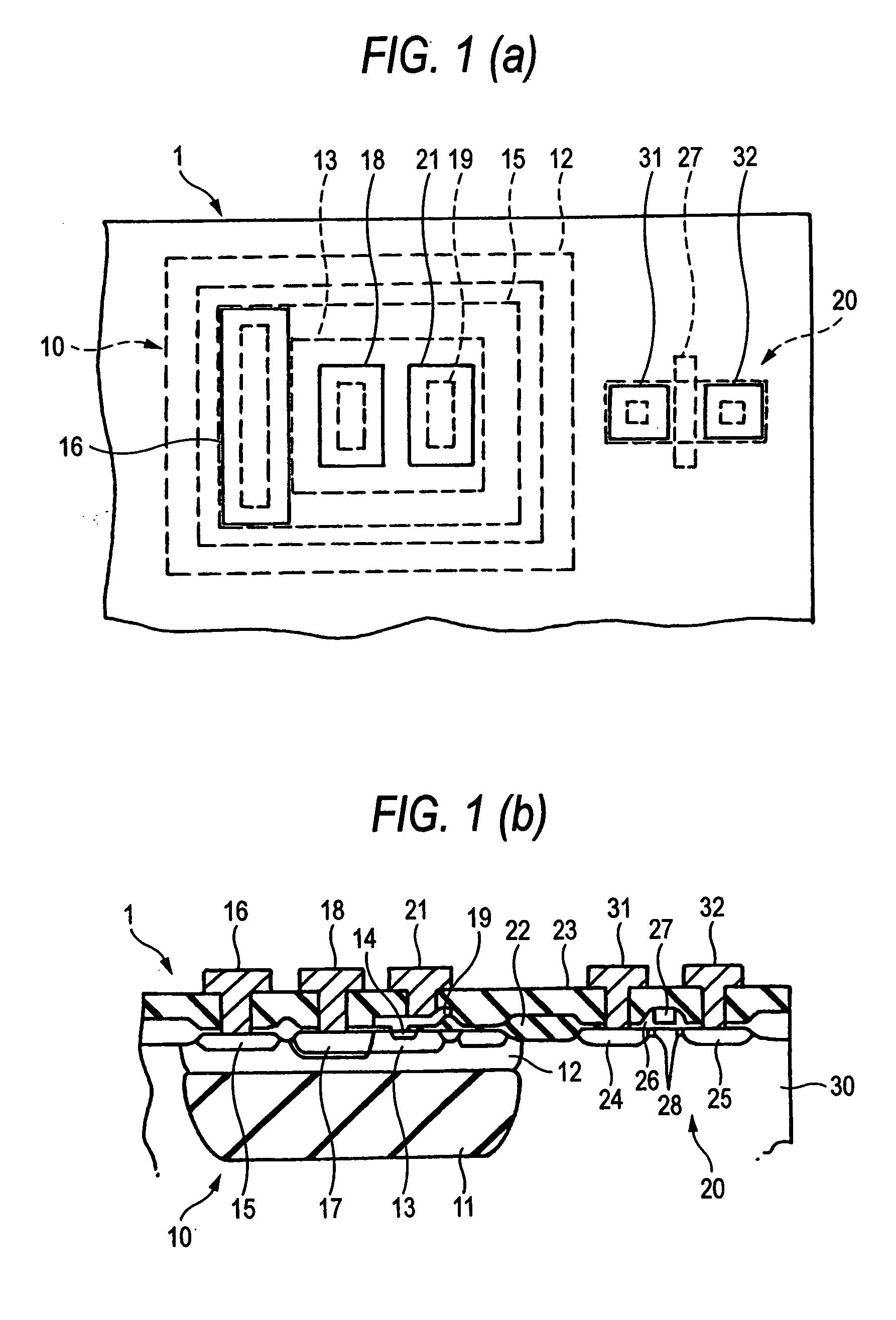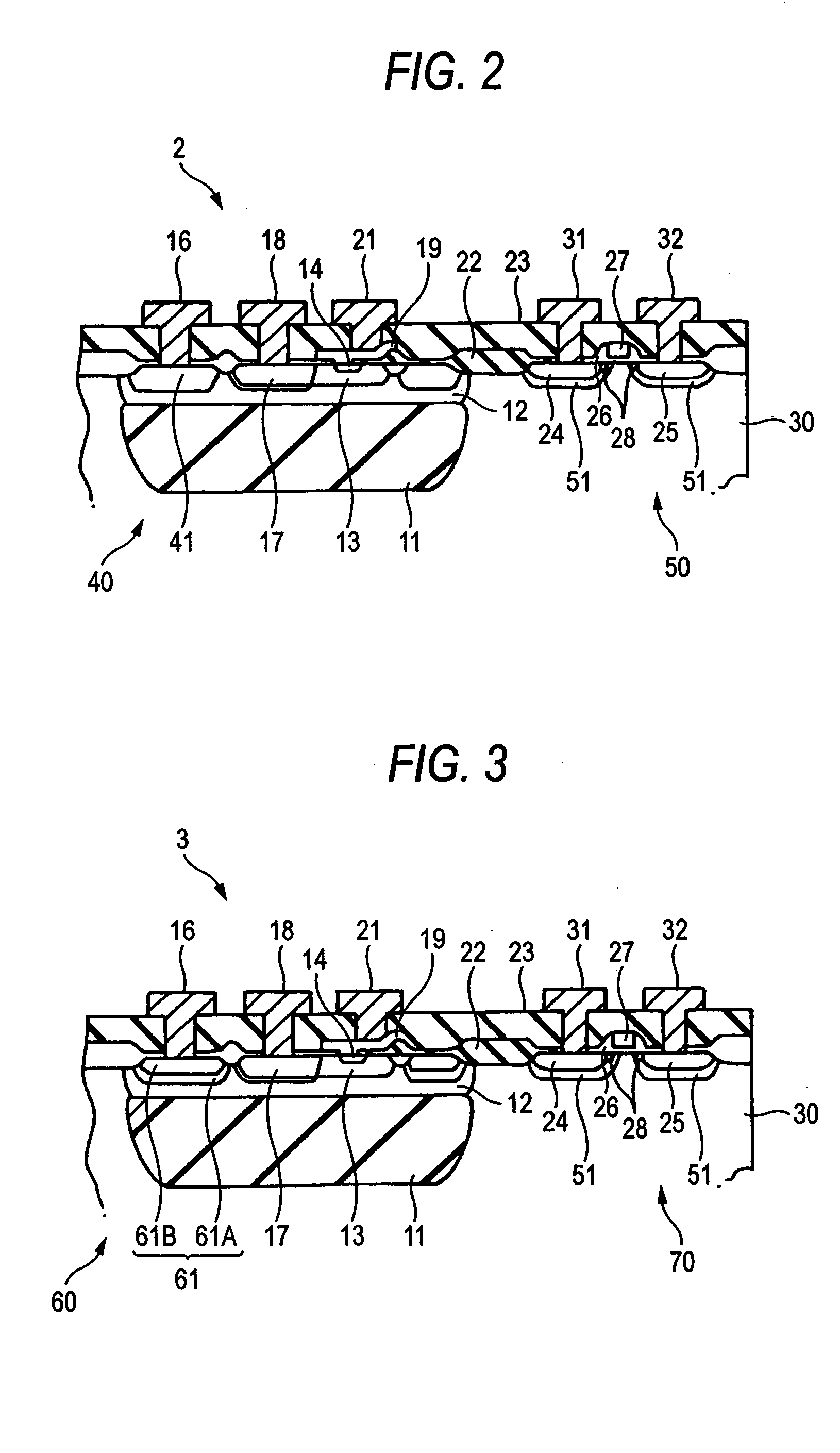Bipolar transistor and semiconductor device using same
a technology of bipolar transistors and semiconductor devices, applied in semiconductor devices, semiconductor/solid-state device details, electrical apparatus, etc., can solve the problems of increasing the size of transistors and incurring the increase of the number of processes of npn transistors, and achieve the effect of reducing the number of processes and small in siz
- Summary
- Abstract
- Description
- Claims
- Application Information
AI Technical Summary
Benefits of technology
Problems solved by technology
Method used
Image
Examples
first embodiment
[0022]FIG. 1A is a plan view showing a semiconductor device according to the invention while FIG. 2 is a sectional view of the same. The semiconductor device 1 is formed with an NPN transistor 10 and an NMOS transistor 20 on a same silicon substrate 30.
[0023] The NPN transistor 10 includes an N+ buried layer formed by diffusing As (arsenic), Sb (antimony) or the like to the P-type substrate 30, a collector region 12 formed thereon by an N− layer, a base layer 13 formed by a P− layer in the collector layer 12, and an emitter layer 14 formed by an N layer in the base region 13.
[0024] In the collector region 12, a high concentration region 15 is formed in a manner fully surrounding the entire periphery of the base region 13, in order to reduce the collector-to-emitter saturation voltage VCE(sat). A collector electrode 16 is connected to the high concentration region 15. The high concentration region 15 is an N+ layer diffused with As (arsenic).
[0025] In the base region 13, a base con...
second embodiment
[0031]FIG. 2 is a sectional view showing a semiconductor device according to the invention. The semiconductor device 2 is formed with an NPN transistor 40 and an NMOS transistor 50 on the same silicon substrate 30. The difference from the semiconductor device 1 of FIG. 1 lies in that the high concentration region 41 formed in a collector region 12 of an NPN transistor 40 is formed by an N+ layer diffused with P (phosphorus) greater in diffusion coefficient than As (arsenic) and that the source region 24 and the drain region 25 of the NMOS transistor 50 are formed with respective regions 51, for countermeasure against static breakdown, diffused with P (phosphorus).
[0032] The high concentration region 41 is formed in the same process as in forming the regions 51 for countermeasure against static breakdown for the NMOS transistor 50. Namely, when P (phosphorus) is diffused in the P-type silicon substrate 30 to form N+-layered regions 51 for countermeasure against static breakdown, the ...
third embodiment
[0034]FIG. 3 is a sectional view showing a semiconductor device according to the invention. The semiconductor device 3 is formed with an NPN transistor 60 and an NMOS transistor 70 on the same silicon substrate 30. The difference from the semiconductor device 2 of FIG. 2 resides in that the high concentration region 61 formed in a collector region 12 of an NPN transistor 60 is formed by an N+-layered first region 61A diffused with P (phosphorus) and an N+-layered second region 61B diffused with As (arsenic).
[0035] The first region 61A of the high concentration region 61 is formed in the same process as in forming the breakdown-countermeasure regions 51 for the NMOS transistor 50, while the second region 61B is formed in the same process as in forming the source region 24 and drain region 25. Namely, when P (phosphorus) is diffused to the P-type silicon substrate 30 to form N+-layered regions 51 for countermeasure against breakdown, the collector region 12 is diffused by P (phosphoru...
PUM
 Login to View More
Login to View More Abstract
Description
Claims
Application Information
 Login to View More
Login to View More - R&D
- Intellectual Property
- Life Sciences
- Materials
- Tech Scout
- Unparalleled Data Quality
- Higher Quality Content
- 60% Fewer Hallucinations
Browse by: Latest US Patents, China's latest patents, Technical Efficacy Thesaurus, Application Domain, Technology Topic, Popular Technical Reports.
© 2025 PatSnap. All rights reserved.Legal|Privacy policy|Modern Slavery Act Transparency Statement|Sitemap|About US| Contact US: help@patsnap.com



